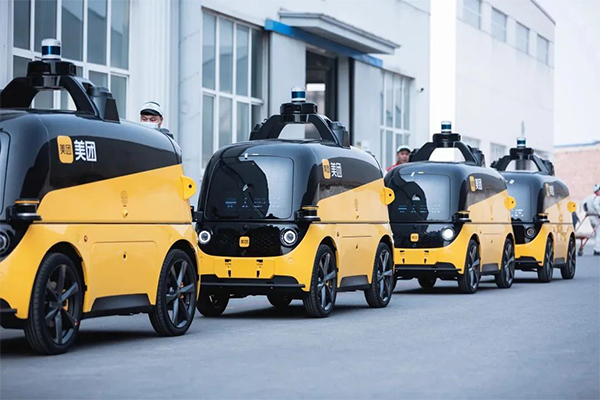 Local News
Local News
Meituan’s autonomous vehicles. File photos
Shenzhen plans to deploy more than 1,000 small autonomous vehicles in logistics and street cleaning by the end of next year, a first in China, an official said at a recent forum that brought together experts and industrial leaders from across the country to discuss the commercial use of intelligent public transport.
The practice will improve logistic delivery efficiency, Xu Wei, deputy director-general of the Shenzhen Municipal Transportation Bureau, told the audience at the forum. “Currently, we are communicating with SF Express and Meituan, which are working on detailed plans for the purpose,” Xu said.
In Pingshan, a total of 32 autonomous vehicles have been deployed in 30 demonstration routes for logistical purposes. Along Chuangjing Road, sightings of these compact and efficient vehicles are becoming increasingly common. Each vehicle boasts a volume of approximately 3 cubic meters, capable of transporting loads of up to 1,000 kilograms. These vehicles have an impressive range of 200 kilometers on a full charge and can achieve speeds of up to 50 km/h on roads.
These vehicles are equipped with advanced technology, including a new perception solution comprising two LiDAR sensors and 12 cameras. This setup allows for a perception range of up to 120 meters and provides a 360-degree full-view perception without blind spots, ensuring clear identification of traffic lights, lane markings, obstacles, and other elements.
Zhang Zhengpan, who is in charge of SF Express’ Dongcheng branch in Longtian Subdistrict in Pingshan, said that five autonomous vehicles have been put into use in Longtian, Shijing and Maluan subdistricts, which have significantly enhanced the efficiency of logistic deliveries.

Autonomous vehicles in Pingshan District.
Shenzhen will highlight the development of intelligent connected vehicles and small autonomous vehicles and aim to build itself into a hub for the development of autonomous vehicles. Autonomous vehicles, characterized by their enhanced safety, efficiency, and inclusive accessibility, are exerting a growing influence on daily life, according to Xu. With substantial market potential, they are poised to catalyze the advancement of the intelligent connected industry.
Shenzhen is set to prioritize the policy formulation, application, supportive infrastructure, and innovation of autonomous vehicles and is working towards its goal of becoming the country’s first demonstration city in which autonomous vehicles can drive on any road, thereby ensuring their large-scale operation across various service sectors. Additionally, Shenzhen is positioning itself to become a leading hub for the innovative development of autonomous vehicles, according to Xu. The city will also devise guidelines to foster the high-quality development of the autonomous vehicle economy and is on track to establish standards for this burgeoning sector.
In 2023, China’s low-speed autonomous vehicle industry achieved a sales revenue of 8.5 billion yuan (US$11.7 billion), a year-on-year increase of 63%, according to a report released by the Low-Speed Unmanned Driving Industry Alliance. The number of various low-speed autonomous vehicles sold totaled 24,500, a year-on-year increase of 22%. It is predicted that by 2025, the sales revenue of China’s low-speed autonomous vehicle industry will reach 16 billion yuan, and the sales volume of various low-speed autonomous vehicles may reach 34,000 units, according to the report.